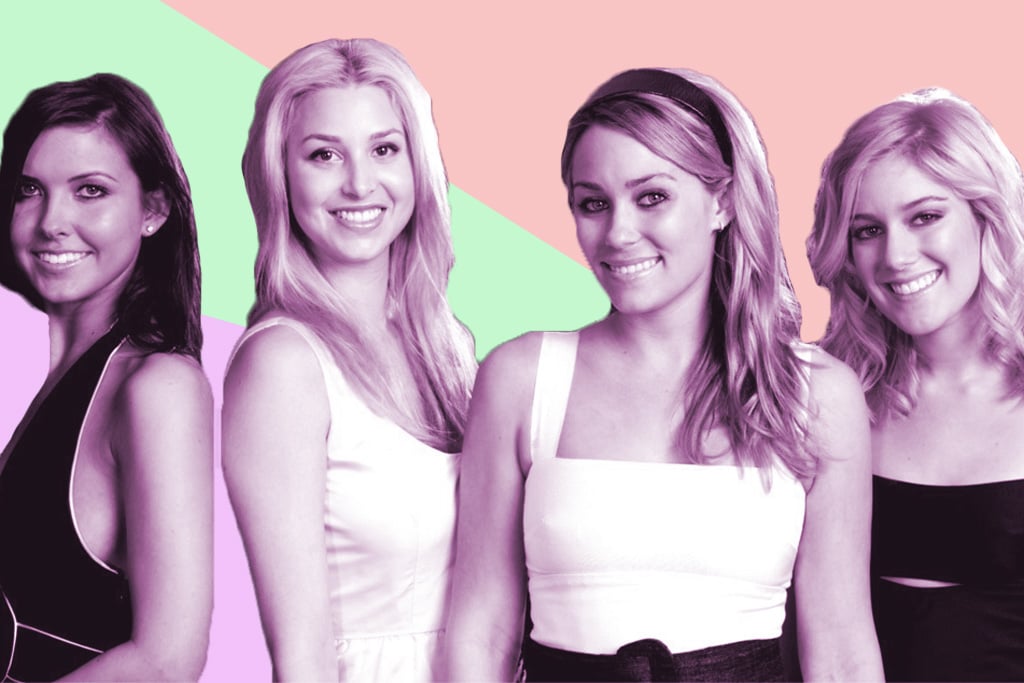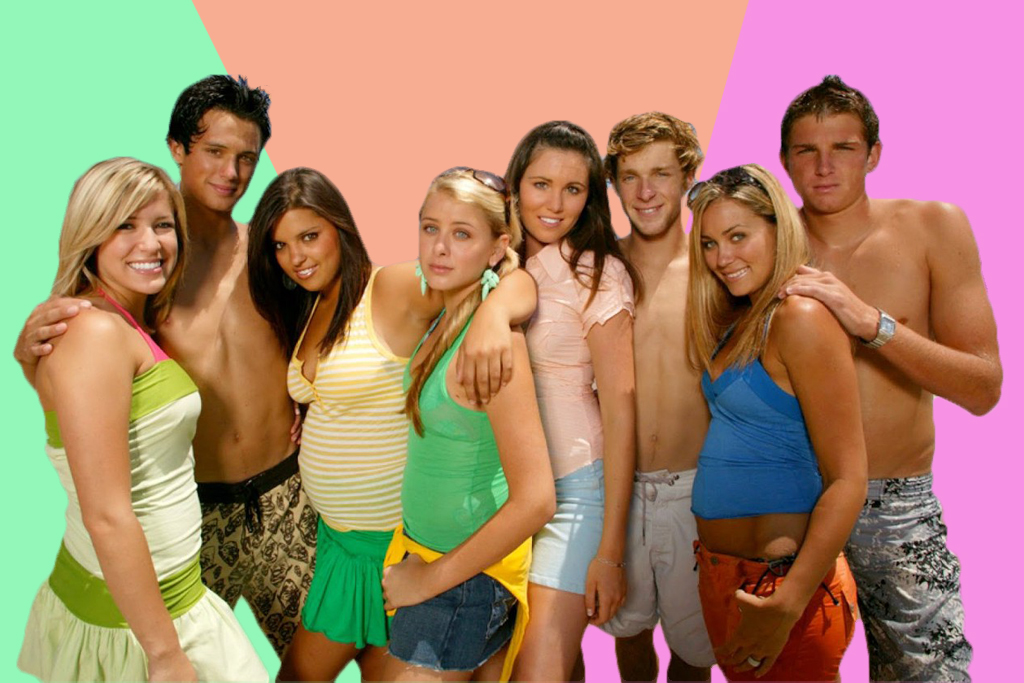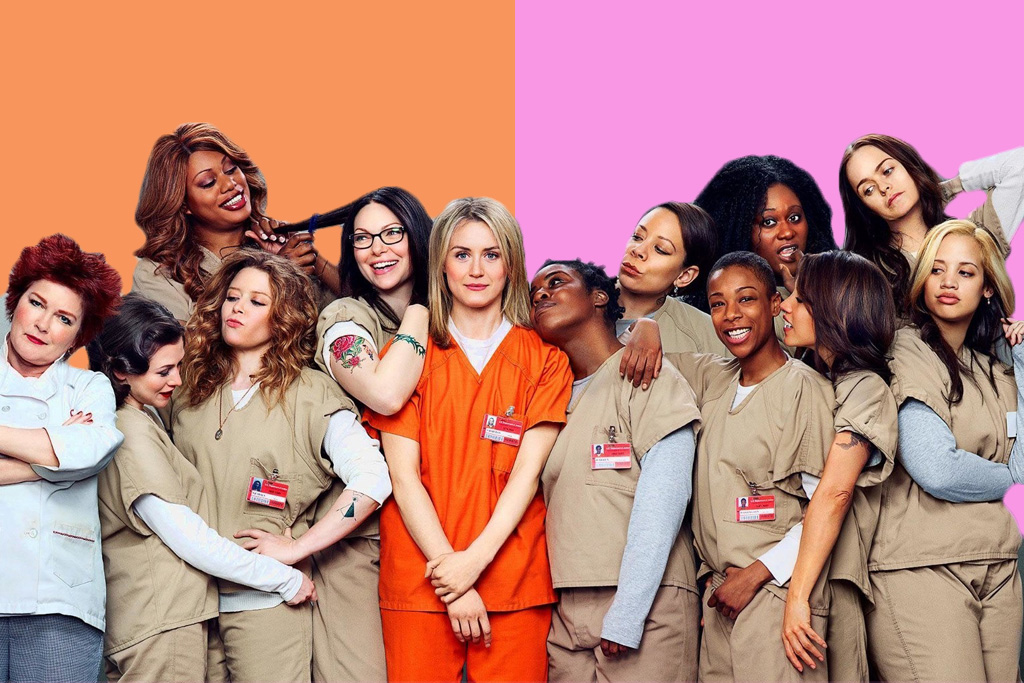It’s Not Too Late To Watch: ‘The Hills’
Screw the reunion - the original is perfect reality television.

MTV’s magnum opus of reality television, The Hills, is returning for a reunion series next year — just as Natasha Bedingfield belts out in the show’s title credits, it turns out the rest is still ‘Unwritten’.
It’s over a decade since Lauren Conrad graduated from MTV’s Laguna Beach to head to LA and take up an internship at Teen Vogue. Unfortunately, it’s unclear what exactly needs writing.
Where previous reality TV shows traded in truth, The Hills dealt in affluent escapism. Centring on a group of well-off, conventionally attractive (white, blonde) early 20something women, they lived in a world divorced of consequence or larger context, where days, months, conversations and boys merged into one beautifully shot and more than occasionally banal blur.
Over a decade later, the cast are in their thirties, lording over GOOP-style lifestyle websites, fashion lines and menstrual wellness brands. Call us pessimistic, but the reunion sounds like a TV show about Instagram influencers. To top it off, The Hills had one of the all-time greatest endings of any television show ever, reality or otherwise. Why would you mess with that?
Running for six seasons, The Hills was a cultural force between 2006-2010. Much like Keeping Up With The Kardashians (which it pre-dates by a year), the two versions of The Hills — televised and tabloid, as the cast became cover stars — often didn’t quite connect, creating a dissonance in which fans would be forced to read between the lines to find out what’s really happening.
In turn, it shifted the gear for how monolithic reality TV could be — even if you’ve never seen the show, you’ve probably absorbed it through osmosis. If you’re not vaguely aware of Heidi and LC’s show-defining feud, then you’ve probably heard of that guy with two names, Justin-Bobby. At the very least, you’ve asked that eternal question: ‘is it even real?’
Which, if you’ve watched it, you know is irrelevant to enjoying the show — after-all, as RuPaul says, ‘real is what you feel’. While we’ll never quite know what was ‘authentic’ and what wasn’t, what we do know is that it’s never too late to watch The Hills.
‘Today Is Where Your Book Begins’
Where Laguna Beach sold itself as a look at ‘The Real OC’, its spin-off, The Hills, was less concerned about mirroring any cultural marker. It was going to be the marker.
LC, one of Laguna‘s big-hitters, was the show’s draw: it placed her in the big bad world of LA to sink or swim. Her roommate was Heidi Pratt, a Coloradan she’d happened to meet at fashion college — in their apartment block was aspiring model/actress/human (??) Audrina Partridge, who show-creator Adam DiVello cast when he found her sun-baking near the apartment pool. The core four were rounded out by Whitney Port, LC’s fellow Teen Vogue intern.
And the plot? Well, there wasn’t really one.
Where most reality TV makes a mountain of molehills, The Hills, despite its name, was a show devoid of histrionics. This probably describes about a good third of the show’s episodes: LC and Whitney stress about a Teen Vogue event, but then everything’s fine; Heidi argues with beau Spencer Pratt; Audrina goes on a date. The result, somehow, is utterly absorbing — largely due to the subdued way it’s told.
To watch The Hills is to let its world wash over you, one of PG13 gossip and inaction where little of note happens on camera, and nothing is blown out to a soap operatic everything.
For starters, the show is visually stunning. Almost too stunning — its carefully composed shots prompted suspicion that the show might be a little light on the ‘real’ part of ‘reality TV’, though we’ll get to that later.
Filmed with tripods and a multi-camera set-up, its hazy nights and bleached-out days were more in-debited to Sofia Coppola than The Real World. While most shows rely on confessionals or voice-over to edit together scenes, The Hills almost never saw its cast acknowledge the camera or break the fourth wall — well, until the show’s final scene, where, spoilers, a craned camera zoomed out to reveal it was shot on a sound stage.
But the masses weren’t watching for its visual flair: they watched for escapism. To watch The Hills is to let its world wash over you. It was a world of PG13 gossip and inaction where little of note happens on camera, and a whole lot of nothing is blown out to a soap operatic everything.
As Rolling Stone wrote in its 2008 cover story on the show, dialogue leans catatonic, too — they describe it as “Harold Pinter after five shots of NyQuil”. When LC or Whitney go on a date with the interchangeable personal trainer or model of the week, it’s impossible to tell how it’s going, the night distilled to awkward banter and eye contact. Like whoever they dish to the next day, we have to wait to see how they feel.
Or if they feel: characters often come across like proto-Bret Easton Ellis characters, affectless and affluent figures meant to reveal some sort of horror about our empty consumerist society. It’s no surprise then that Ellis calls The Hills “a modern masterpiece”, and that he’s never seen “LA look more beautiful in a work of art.”
While we’re not sure it’s the societal critique Ellis positions it as, he has a point. Los Angeles is the defining feature of the show. If the fifth girl of Sex And The City is New York, then The Hills’ secret lead is LA. And, unlike Mulholland Drive, it leaves you on a serotonin high.
‘Release Your Inhabitions’
As The Hills grew in popularity, regularly netting five million viewers in the US, the fiction of the show became more and more obvious: LC was both a Teen Vogue intern and its cover star.
By Season 3, the show refused to burst its bubble and acknowledge that these girls weren’t just 20somethings writing their own lives, but acting out a distorted version of them in front of the world. They were famous, and it was somewhat ridiculous to see them hold down nine-to-five internships or entry-level reception jobs while they launched their own pop careers and fashion labels.
The Hills completely indulged a 20something’s tendency to view a friendship break-up as a soap operatic betrayal, complete with an MTV-approved indie-rock soundtrack and stunning shots of the sun setting on the day’s drama. What more could you want?
Massive, headline-generating moments were also curiously absent from the show — as Rolling Stone notes, the show left out life-changing events, such as the death of Heidi’s stepbrother, an Iraq war veteran who died in an accident not long after returning home from service. Of course, Heidi and her family were completely entitled to grieve in private: but when tabloids covered it anyway, it showed the growing gap between the show and reality.
It was probably at its most egregious at the dissolution of Heidi and LC’s friendship, which revolved around a rumour that Heidi’s partner, Spencer, had leaked an alleged sex-tape of LC and her ex, Jason Wahler. On the show, it comes across as a fight between friends, rather than the reality — rumours of the tape’s existence floated through the media, and LC was hounded by paparazzi about it.
By glossing over the fact the rumours had a worldwide audience, The Hills made the rift — which ended up shaping the show — even more intense: the emotions were high-stakes, but the context was shrunk.
Which is The Hills at its best. By pretending these celebrities’ tiffs were akin to the viewer’s own dramas, it completely indulged a 20something’s tendency to view a friendship break-up as a soap operatic betrayal — complete with an MTV-approved indie-rock soundtrack and stunning shots of the sun setting on the day’s drama. What more could you want?
Besides, realness was never The Hills‘ game, as MTV itself said that the label of reality TV “didn’t perfectly apply” to the show. Plus, watching in 2018, the show’s complete avoidance of race, gender and class immediately shows that this world is not our own.
As Broadly writer Lauren Oyler writes, “perhaps the reason the show struck the lazy television balance between being gripping and tedious was that, until [Heidi’s] plastic surgeries, the problems the characters experienced did not exist in the “reality” where class and gender and race create discriminations that must be fought against, but their issues nevertheless felt ‘real’ (because they were so boring).”
While we wouldn’t go as far as The Guardian and call the show a “post-Truth” pioneer, we see the links. In 2008, when Heidi told Rolling Stone that her haters were actually her fans, it felt ludicrous — but now, we know that engagement is the end-game, and that careers are made and sustained off hate-clicks and alternative facts.
The show, however, was undoubtably a pioneer of the ‘influencer’: the blueprint of a carefully curated Instagram feed is evident watching The Hills, where everything, even heartbreak, stays on the surface. It makes sense that that’s where most of the show’s biggest hitters now make their money.
Where To Start
The beginning’s as good as anywhere, though Season 3 and 4 were when The Hills was at its cultural peak.
We’re not fussed on Season 5 and 6, as things drop off a little when LC leaves and it becomes the Kristin Cavallari show — though if you’re that far in, you’re probably going to keep watching.
Where You Can Watch It
The Hills‘ six seasons are available on Stan.
—
Jared Richards is a staff writer at Junkee, and he’s certain that Spencer and Heidi know exactly what they did. Follow him on Twitter.

